Blog Archives
There is no “right answer”
Well, here we are about half way through week one of SHA 2014 and oh, my! I hope I speak for the rest of my classmates when I say that I have run the gamut from energized to overwhelmed and back to inspired. We all survived the Sunday afternoon introductions, laughing, dancing and drawing our way through the lives of our quirky colleagues. My big take-away? We’ve got humor and talent, folks!
Some themes are starting to emerge as we move through this first week. The big one is that no two history organizations are exactly alike and so there are no absolute solutions to the problems that face us. However, there are approaches and philosophies that can be applied, so that is what I will attempt to summarize. I hope that my classmates, our speakers, and SHA alums will pipe in with their own opinions.
 Or perhaps get together over a beer or two to have a heated discussion about it!
Or perhaps get together over a beer or two to have a heated discussion about it!
Energy
The history field is not for spectators. If you are going to be relevant in the 21st century you need to commit time for change. Janet Gallimore (Executive Director, Idaho State Historical Society) showed us the path she used to take a fully irrelevant organization from nice to necessary. It takes time (5 years to establish sustainable change) but the results are worth it. So many of our speakers have presented pictures of success based on energy, both staff and community generated. If we have power, strength, vitality and spirit vibrating from our very core, we can meet budget challenges, overcome disinterest and ennui, inspire future history professionals and, yes, change the world around us.
Does anybody care?
We have all experienced empty public spaces during open hours. Some public history staffs breathe a sigh of relief and think “now I can get some work done.” Well not for this SHA class! We worry, fret and downright panic at the very thought. Providing relevant, inspiring and positive experiences for our users is as important as collecting and preserving the authentic, real stuff that makes up our collections. Meeting our audiences where they are is part of our discovery process. Perhaps we have to stop thinking of it as history programming and just view it as engagement activities. How do our communities view us, what do they want from us and would they care if we disappeared? There is no one right answer to these questions but we really need to be asking them.
Urgency
Technology is evolving so rapidly, the tech industry can barely keep up. Small and large museums are facing serious financial
challenges. Federal, state and local agencies are making decisions about support and inclusion for history organizations every day which threaten our organization’s futures. A less stalwart group might think “there is no time to plan or prepare” but many in the history field are trying new things, taking risks and exploring new collaborations and partnerships. Again there is no secret formula to cure all but the organization that wants to succeed needs to be looking around at what success looks like in all forms. If Target and Wegmans can offer inspiration for customer service and community expansion, then by all means, we need to be paying attention.
Leadership
One common thread running through it all is, regardless of your title, you are now part of the leadership in this field. Each of us brings different skills to the table, but we all want to see our organizations succeed and thrive. We hope to absorb as much as possible from each leader we speak with over the next three weeks and then go home to integrate all we have learned into our daily lives. Today, we each wrote down a strategy we hope to implement over the next six months. When that note comes to us in the mail next April, how many of us will have been empowered enough to follow through?
A huge shout out to all the folks at the Indiana Historical Society who are making us feel so welcome and smoothing our way where ever we go! You guys rock!
Changes for the Class of 2011: Clarity, Growth, Co-Conspirators
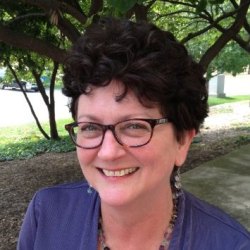 One day during DHL@SHA, after I had listened to Indiana Historical Society‘s President/CEO John Herbst’s presentation, I asked him to lunch through his assistant. I even paid for it because I did the asking! John had information I knew I needed. He had already conquered some of the challenges I was facing at my own institution–and SHA gave me the confidence to go straight to the source and ask for help. After that lunch, he became what I consider an “unwitting mentor.” Once I returned to Arizona where I had worked for the last ten years or so–and had been Museum Director for one year, I emailed him and called him several times to run ideas past him, to ask for his advice–and he always answered. Between what I had gleaned from my overall SHA experience and through the specific interactions with John, my thought process changed. My confidence was bolstered to trust myself and move forward in the direction I believed to be true…I did not simply think about taking risks–I began proposing and taking those risks.
One day during DHL@SHA, after I had listened to Indiana Historical Society‘s President/CEO John Herbst’s presentation, I asked him to lunch through his assistant. I even paid for it because I did the asking! John had information I knew I needed. He had already conquered some of the challenges I was facing at my own institution–and SHA gave me the confidence to go straight to the source and ask for help. After that lunch, he became what I consider an “unwitting mentor.” Once I returned to Arizona where I had worked for the last ten years or so–and had been Museum Director for one year, I emailed him and called him several times to run ideas past him, to ask for his advice–and he always answered. Between what I had gleaned from my overall SHA experience and through the specific interactions with John, my thought process changed. My confidence was bolstered to trust myself and move forward in the direction I believed to be true…I did not simply think about taking risks–I began proposing and taking those risks.
I gained clarity. I understood, more clearly than ever before, my personal thoughts, beliefs, and abilities. I honed in on my professional goals and objectives. Clarity was a result of my experience at SHA and from the people with whom I interacted.
Fast forward two years–I received a job offer that seemed as if I wrote if for myself. My husband quit his job, we packed up the cat and car, and moved cross country. I am now VP of Education and Exhibitions at IHS. Now, John and I have two separate stories about how this happened. I tell everyone that I bugged him until he hired me. He says that I made an impression on him at SHA was on his radar since. I am sure there is the real story somewhere in the middle.
My point is that you never know where SHA will lead you–or to whom SHA will lead you.
Kyle McKoy (SHA ’11), Vice President of Education and Exhibitions, Indiana Historical Society
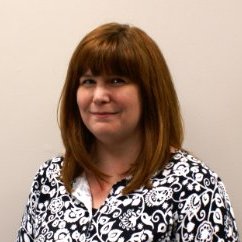 In DHL@SHA, I kept hearing that we were to think of how to be leaders in the field. And, there I sat, thinking about how I still felt new in my museum career and unsure of where that would lead. See, when I participated in SHA I was trying to better understand the field, a field I entered through classroom teaching. My institution had just gone through our initial accreditation process — and in a classroom analogy, I felt one chapter ahead of the students. I was the primary author of our interpretive plan — and that was after learning just what that document was!
In DHL@SHA, I kept hearing that we were to think of how to be leaders in the field. And, there I sat, thinking about how I still felt new in my museum career and unsure of where that would lead. See, when I participated in SHA I was trying to better understand the field, a field I entered through classroom teaching. My institution had just gone through our initial accreditation process — and in a classroom analogy, I felt one chapter ahead of the students. I was the primary author of our interpretive plan — and that was after learning just what that document was!
But the thing is, you hear something often enough and you start to believe it. After SHA I realized I didn’t want to just have knowledge about the field, I wanted to grow into a leader at my institution. And, for the small institution I came from, that meant leading from the middle. And yet, I was able to co-develop the bones of an institutional evaluation plan, be a voice for developing new revenue streams, and develop other projects within my primary duties as a museum educator. I grew a lot in those two years, both personally and professionally. And then…
My SHA classmate, Kyle, moved to the Indiana Historical Society in 2013. She and I had kept in touch since the program (most of my classmates have kept in touch over the past 2+ years). I always knew I could turn to Kyle as a sounding board and a cheerleader! We had discussed articles about leadership and management styles. She’d once recruited me for a position at her old site, which didn’t work out because of timing. But, when a position opened up at IHS, I applied on day one. Here was a chance to have an on-site mentor, rise to the next level of leadership and be a part of a team implementing new vision. I’m now the Director of Education and Community Engagement at IHS.
It’s been two amazing months since I’ve moved. I’ve found co-conspirators at my new place (you’ll understand the power of that term at SHA), and I’m over the moon about where I’ve landed. I could not have predicted how SHA would change me at the time, but I know that it shaped me into the leader I am today.
Cynthia Capers (SHA ’11), Director of Education and Community Engagement, Indiana Historical Society
A Sneak Peak into SHA
Developing History Leaders @SHA is an unrivaled professional development experience.
And I’m not just saying this because I am the chair of the Alumni Committee. It’s true.
SHA is a distinctive, one-of-a-kind experience because it combines depth, in the form of three weeks of engaging deep discussion about issues facing the history/museum field, with breadth—discussions led by nationally recognized leaders in the history/museum field. SHA brings current and future leaders together to learn from each other, challenge one another, and develop life-long relationships, all in an intimate and collegial atmosphere.
If you’ve heard my spiel before (which, if you’ve ever met me or ran into me at a conference, I’m sure you have), you know that I’m an advocate for the SHA program – not only because of what it has done for me and my own career, but also because of what I have seen the program do to shape the lives and careers of so many of my peers and colleagues.
SHA is the real deal.
Want proof? The SHA Alumni committee would like to offer you a sneak peak into what goes on within the walls of the Indiana Historical Society during those transformative three weeks. This year’s Seminar keynote speaker, Katherine Kane, Executive Director at the Harriet Beecher Stowe Center, graciously agreed to have her program opening talk recorded (H/T to SHA Alum and Former Alumni Chair Laura Minzes for capturing it!).
There are two versions of Katherine’s talk available on the AASLH YouTube Channel for your viewing (and sharing) pleasure – one version is 48 minutes long and the other is an eight minute excerpt.
Interested in applying for SHA? Watch the video.
Do you know of someone who may be interested in learning more about the program? Share the video.
Are you an alum or an organization that supports SHA? Watch, then share the video.
SHA matters because what we do matters. SHA matters because it challenges emerging leaders in the profession to take risks, question commonly-held assumptions and think differently about how their work can impact the cultural heritage field around them. SHA matters because it helps participants create a leadership toolkit and professional network that can help guide their careers. And, maybe most importantly, SHA matters because it guides, supports, and encourages the growth of its participants – the current and future leaders in the field – who will make what we do possible far into the future.
Applications for the Class of 2014 are due May 19, 2014. Click here for more information.
Special thanks to ISMHS Media Manager Leslie Lorance and SHA Alum Richard Cooper for their assistance!
Welcoming my SHA Classmates to Indianapolis!
Posted by Eleanor Batic, Indiana Historical Society
We are about to embark on the day of field trips that will shape our fourth day of study with the 2013 class of Seminar for Historical Administration. I realize that we still have more than two weeks to go, but frankly, if it ended now, I would have already felt this to be an incredible experience. As a participant based at the Indiana Historical Society, home base for the SHA classroom, and a resident of Indianapolis, the hosting city, I feel a tremendous sense of pride for the amazing museum work being done locally that can be used as a living classroom for students of the field. I am looking forward to seeing the President Benjamin Harrison Home and the Eiteljorg Museum of American Indians and Western Art today through fresh eyes, all the while thinking about the big picture questions raised by our presenters thus far.
So far talks by Spencer Crew, Katherine Kane, Estevan Rael-Galvez, Jim Vaughn, Ken Turino, and Elee Wood have all raised fascinating points and hit on issues both that I struggle with currently or realize that I will encounter in the future. Starting out with a discussion about why we went into the field of history in the first place (and how wildly that varies for even the small sample present in my classroom), was a wonderful validation of the choices I made more than 15 years ago when I decided to pursue this career.
The SHA class of 2013 is only beginning the learning opportunities that will unfold in the next few weeks. I am proud to welcome my fellow classmates and faculty to the city of Indianapolis and look forward to unpacking a Midwestern city’s approach to the public history field through the eyes from professionals from some of the nation’s top organizations. Already, just four days in, I am hitting my pillow each night intellectually (and in two cases so far, emotionally) exhausted, but so excited for that alarm to go off so that I can begin a new day. I am so grateful for this opportunity and cannot wait to continue on this adventure alongside my SHA classmates and partners in this journey.
Random Thoughts on Developing Leaders @SHA
 After graduate school I accepted a position at a county historical society. I was interested in SHA because I wanted a foundation in historical administration to dovetail with my “baptism by fire” experience. The three-week format covered a great deal of information in a short amount of time which was best for my personal (I had a 3-year-old at home) and my professional life.
After graduate school I accepted a position at a county historical society. I was interested in SHA because I wanted a foundation in historical administration to dovetail with my “baptism by fire” experience. The three-week format covered a great deal of information in a short amount of time which was best for my personal (I had a 3-year-old at home) and my professional life.
SHA is so much more than three weeks of talking about the history field – it’s an opportunity to grow professionally and think about where you want to be in the future, it’s taking time out to really think about the larger field and how you and your organization fit into it, and it’s building a network you can utilize for the rest of your career.
Attending SHA opened my eyes to the possibilities in the field and gave me the confidence to start looking for my next opportunity. My SHA network served as cheerleaders and a sounding board for my search. I went to SHA in fall 1996 and by spring 1998 I started a new position at the Indiana Historical Society (IHS.) SHA faculty and alum from my class and other classes challenged me to think strategically about my career and what I wanted in my next position. After 15 years at IHS, I am starting a new adventure at the end of May 2013 as the Director, Art and History Venues at the Stark Foundation in Orange, TX. I feel confident to move forward in this new leadership position because I do so with a passion for the work, broad experience in the field, and an exceptional network of colleagues around the country many of which I know through SHA. I am proud to be associated with the Developing History Leaders @SHA program as faculty and I regularly encourage colleagues to apply to the program. And note to John Durel and Bob Beatty – I’ve already started thinking about members of my new team that would be great candidates to apply in future years.
If you can’t apply this year, then start planning for a future year. If your employer needs convincing, hook up with SHA alum or faculty to make the case. If you are concerned about the funds, consider applying for one of the scholarships. If you are worried about being away for three weeks, talk to alum who found the time away to be just right. There will never be a perfect time to attend, but it is always the right time to invest in you – personally and professionally.
Trina Nelson Thomas attended SHA in 1996 as the first recipient of the William T. Alderson scholarship. She has served on the SHA planning committee, as local logistics wrangler, as seminar faculty, as most likely to be carried around by loony SHA alum, and as advocate at large (since the title of SHA Tsarina doesn’t exist). She has worked at the Indiana Historical Society for the past 15 years and soon begins her next set of adventures at the Stark Foundation in Orange, TX.
See Things Differently With SHA
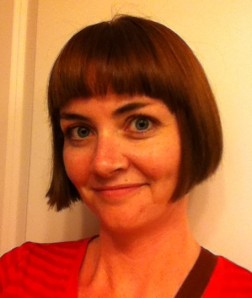 In the beginning of the movie Back to the Future, Marty McFly struggles to get his band off the ground and find direction in his life. Before I attended SHA in 2011, I felt like Marty—spinning my wheels, not really sure where to go next, etc. Luckily for those of us in the history field, we have a Doc Brown to turn to: SHA. Granted, it’s not a time machine made out of a Delorian, but still just as effective.
In the beginning of the movie Back to the Future, Marty McFly struggles to get his band off the ground and find direction in his life. Before I attended SHA in 2011, I felt like Marty—spinning my wheels, not really sure where to go next, etc. Luckily for those of us in the history field, we have a Doc Brown to turn to: SHA. Granted, it’s not a time machine made out of a Delorian, but still just as effective.
Now in your mind, jump to the end of Back to the Future when Marty experiences the new 1985. His parents and family are better off than they were before and Marty’s got a brand new truck in the garage. Completing SHA is a lot like Marty re-entering reality. You see things differently. New opportunities become available (although I did not get a new truck out of it but you see what I mean). The world looks and feels bigger, if only because your eyes are open with a fresh perspective.
One year after SHA, I was promoted to Assistant Director of Education and Community Engagement at the Indiana Historical Society. I worked hard in the year following SHA to lead from the middle, volunteer to assist with more projects and become a more active member of the education field. This, coupled with my new perspective and knowledge from SHA, led me to where I am today.
I learned a lot about myself during those three weeks. I gained lifelong friendships, created a national network of history colleagues and allowed myself to take time for me. There is always a reason not to do something. Push those to the back of your mind and apply for SHA today.
Becca Beck (SHA ’11), Assistant Director of Education and Community Engagement at the Indiana Historical Society

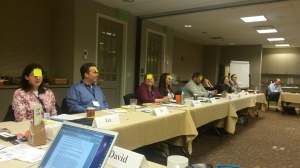
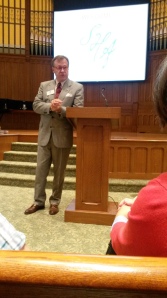
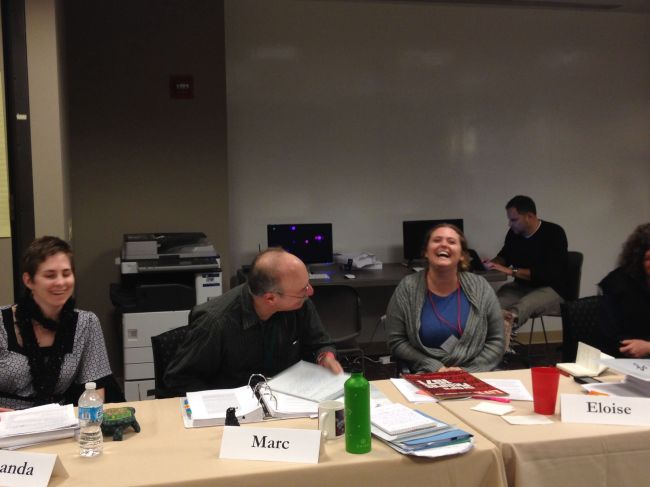


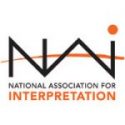



You must be logged in to post a comment.